The imperative for controlled mechanical stresses in unraveling cellular mechanisms of mechanotransduction
- PMID: 16672051
- PMCID: PMC1526737
- DOI: 10.1186/1475-925X-5-27
The imperative for controlled mechanical stresses in unraveling cellular mechanisms of mechanotransduction
Abstract
Background: In vitro mechanotransduction studies are designed to elucidate cell behavior in response to a well-defined mechanical signal that is imparted to cultured cells, e.g. through fluid flow. Typically, flow rates are calculated based on a parallel plate flow assumption, to achieve a targeted cellular shear stress. This study evaluates the performance of specific flow/perfusion chambers in imparting the targeted stress at the cellular level.
Methods: To evaluate how well actual flow chambers meet their target stresses (set for 1 and 10 dyn/cm2 for this study) at a cellular level, computational models were developed to calculate flow velocity components and imparted shear stresses for a given pressure gradient. Computational predictions were validated with micro-particle image velocimetry (microPIV) experiments.
Results: Based on these computational and experimental studies, as few as 66% of cells seeded along the midplane of commonly implemented flow/perfusion chambers are subjected to stresses within +/-10% of the target stress. In addition, flow velocities and shear stresses imparted through fluid drag vary as a function of location within each chamber. Hence, not only a limited number of cells are exposed to target stress levels within each chamber, but also neighboring cells may experience different flow regimes. Finally, flow regimes are highly dependent on flow chamber geometry, resulting in significant variation in magnitudes and spatial distributions of stress between chambers.
Conclusion: The results of this study challenge the basic premise of in vitro mechanotransduction studies, i.e. that a controlled flow regime is applied to impart a defined mechanical stimulus to cells. These results also underscore the fact that data from studies in which different chambers are utilized can not be compared, even if the target stress regimes are comparable.
Figures







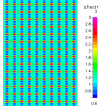
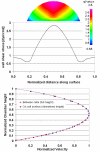
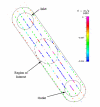
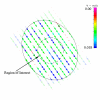
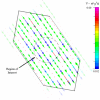
References
-
- Pavalko FM, Chen NX, Turner CH, Burr DB, Atkinson S, Hsieh YF, Qiu J, Duncan RL. Fluid shear-induced mechanical signaling in MC3T3-E1 osteoblasts requires cytoskeleton-integrin interactions. Am J Physiol. 1998;275:C1591–C1601. - PubMed
-
- Guo P, Weinstein AM, Weinbaum S. A hydrodynamic mechanosensory hypothesis for brush border microvilli. Am J Physiol Renal Physiol. 2000;279:F698–F712. - PubMed
-
- Birukov KG, Birukova AA, Dudek SM, Verin AD, Crow MT, Zhan X, DePaola N, Garcia JG. Shear stress-mediated cytoskeletal remodeling and cortactin translocation in pulmonary endothelial cells. Am J Respir Cell Mol Biol. 2002;26:453–464. - PubMed
-
- Rectenwald JE, Moldawer LL, Huber TS, Seeger JM, Ozaki CK. Direct evidence for cytokine involvement in neointimal hyperplasia. Circulation. 2000;102:1697–1702. - PubMed
Publication types
MeSH terms
Grants and funding
LinkOut - more resources
Full Text Sources
Other Literature Sources

